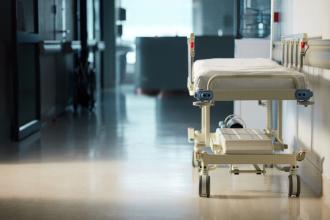My pandemic fears, part 2
15 December 2020
Since my previous editorial,[1] penned near the start of the pandemic, much has changed and much has stayed the same. The fears I expressed then have, unfortunately, proven to be founded—as evidenced by our current reality. The number of positive cases in my practice and those of my colleagues has risen steadily in recent weeks, and this is a microcosm of what we are seeing across the province and the country. Guidelines from public health officials for the containment of the SARS-CoV-2 virus have become more stringent and persistent, but they are still not strict enough for my liking. Maybe the guidelines are adequate, but the number of rule followers in the population is inadequate. Those who choose to not wear masks are relying on those of us who do to keep them safe. I suspect that the people who do not wear masks are also the people who do not avoid gatherings. Do they do so out of ignorance or denial or a bit of both?
I am thankful to see that health authorities have stepped up their testing capabilities. Since I last opined on this topic, I have seen new swab sites become operational and testing opened up to everyone. Due to recurring outbreaks at my local hospital, I have undergone four COVID-19 tests. My first nasopharyngeal swab didn’t seem too bad, but the second and third swabs brought tears to my eyes. By the fourth time, I opted for the saline gargle test at a new drive-through swab site close to my home. I have been impressed by the staff I have encountered at the various swab sites I visited. They have been pleasant, efficient, and thorough. Thankfully, so far, all my tests have been negative. These days, a negative result is a positive event.
In my opinion, the next step that health authorities need to take is to start assessing patients at the swab sites as well. Although we are finally being adequately supplied with PPE from the government, our offices are not the ideal places to assess patients who may be contagious. These days, I treat everyone as a potential source of the virus. I am reminded of one of my clinical instructors in medical school who warned us about the prevalence of syphilis. Syphilis was also known as luetic disease, from the word “lues” (pronounced like the name Louise). I can still hear my instructor singing the line from a Maurice Chevalier love song from the 1930s, “Every little breeze, seems to whisper Louise.” Today, every little breeze seems to whisper COVID. Syphilis was also known as “the Great Impersonator,” as is COVID, sometimes impersonating a mild viral upper respiratory infection or a mild diarrheal illness.
The pandemic has also brought out the best in people. So many health care workers and frontline workers of all stripes have stepped up to do more to help keep people safe, healthy, and cared for. Unfortunately, frontline workers, be they grocery store clerks, truckers, cleaners, doctors, teachers, or nurses, are getting burned out by carrying the burden of defence against COVID-19. If we are relying solely on our front line to keep us safe, then once that line is breached, there is no other defence. In a war, we don’t rely solely on the frontline soldier to win the war. We have other means of defence and attack. In the war against COVID-19, we need everyone to do their part, by staying home as much as possible. Otherwise, the physical and emotional costs to the frontline workers are going to be greater than the financial costs to society. I understand that it’s a fine balance between competing interests, but it feels as if society is on one side of the scale and the comparatively small number of frontline workers are on the other side, balancing the health of society. As the weight of responsibility on frontline workers grows heavier, we need more help on that side of the scale.
—David B. Chapman, MBChB

